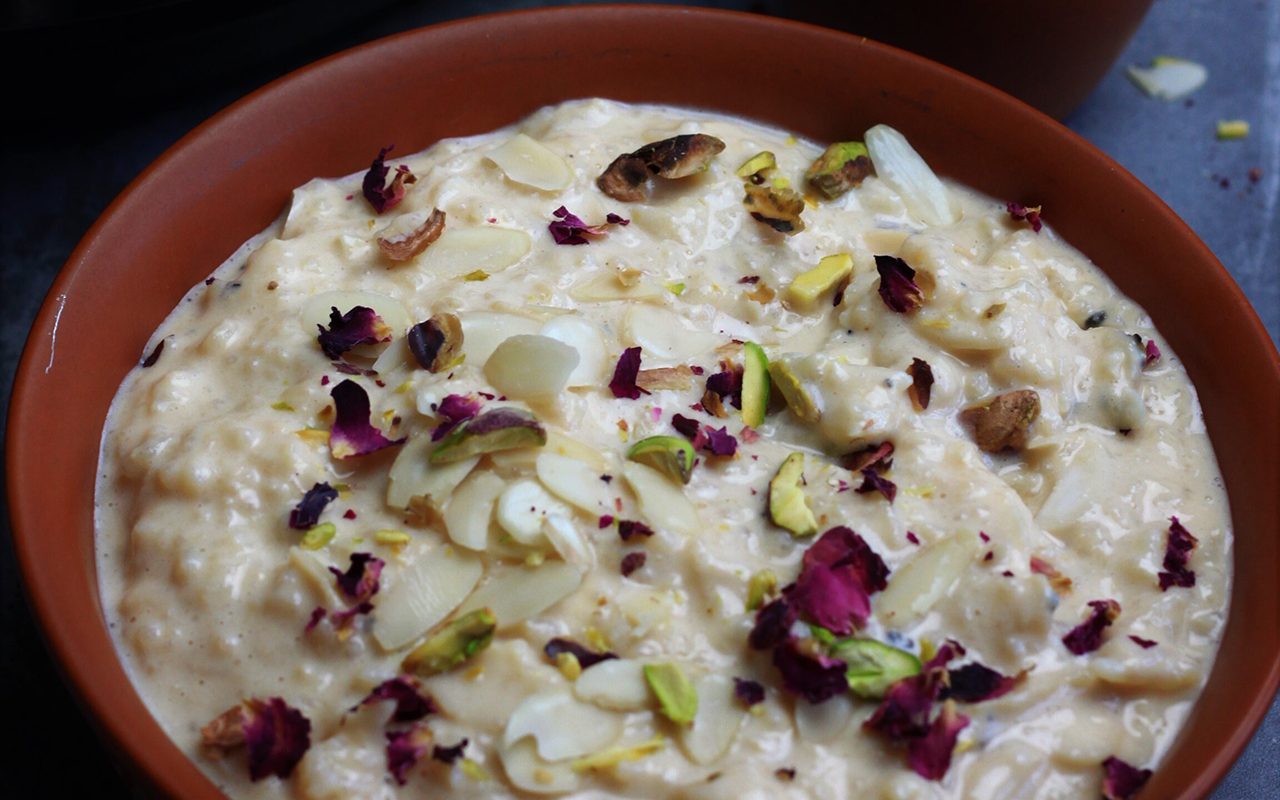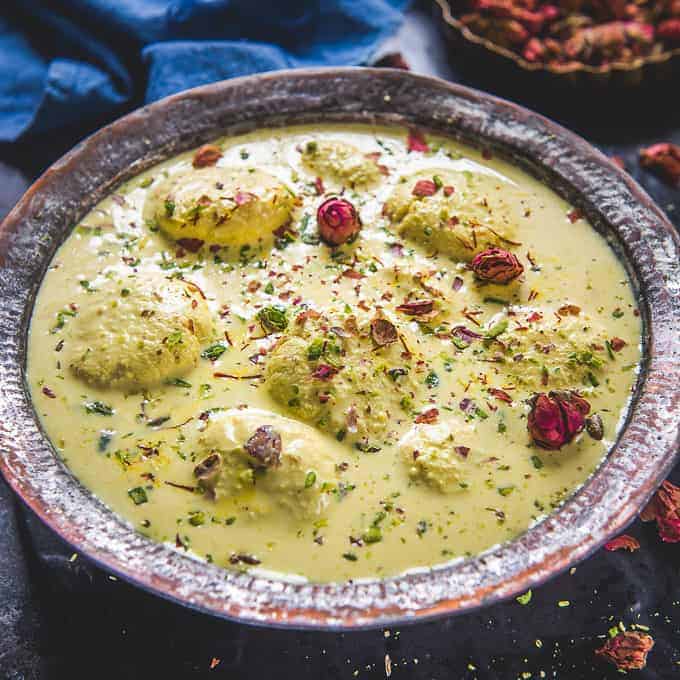![]()
In Hinduism gods are not all powerful. They are not exactly human, and they perform insane feats. There is an Hindu god known as Krishna. He is worshipped as the eighth avatar of Vishnu, the god of preservation, also as the supreme God in his own right. He is the god of protection, compassion, tenderness, and love and is one of the most popular and widely revered among Indian divinities, but he was not very dignified. The stories say that he was extremely mischievous and was always plotting something. As a child he would break into the cow pens and steal butter, his favorite food. They call him “Makhan Chour” or butter thief. But other than butter he would also steal kheer. He would sneak into the houses of those making kheer and steal the kheer.

In many cultures rice pudding would often show up in the culture when rice arrived to the area. Kheer is the Indian equivalent to rice pudding. The first mention of kheer, which historians say was derived from the Sanskrit word kshirika (meaning a dish prepared with milk), is found in the fourteenth century Padmavat of Gugarat, not as a rice pudding but a sweet preparation of jowar and milk. Back then using millets in pudding was quite common. Although that is the first official mention of kheer, it has been proven that kheer was a part of the ancient Indian diet, thanks to its being mentioned in ayurvedic medicines, and the fact that rice arrived in India much before it did in Europe and India’s neighbors, who were introduced to rice courtesy the Arabs and the Spice Route much later, very little is known as to when the first kheer was prepared or its story of origin (A basic history can be found here).
At it’s core Kheer is essentially rice pudding with spices, but do not let that similarity deceive you. Kheer is one of the most unique desserts in India. Opposite to the rest of the sweets I have covered, Kheer is more popular in South India than it is in North India, and like with everything else in India there is a lot of variety. There are a great variety of kheer recipes. You can replace rice with grains, fruits, vegetables, millets, quinoa, vermicelli, etcetera to make this dessert. The most popular form of this dessert is the rice version, a recipe of which can be found here. I personally have not tried many versions of kheer besides the rice version, but I would recommend trying at least that version.









